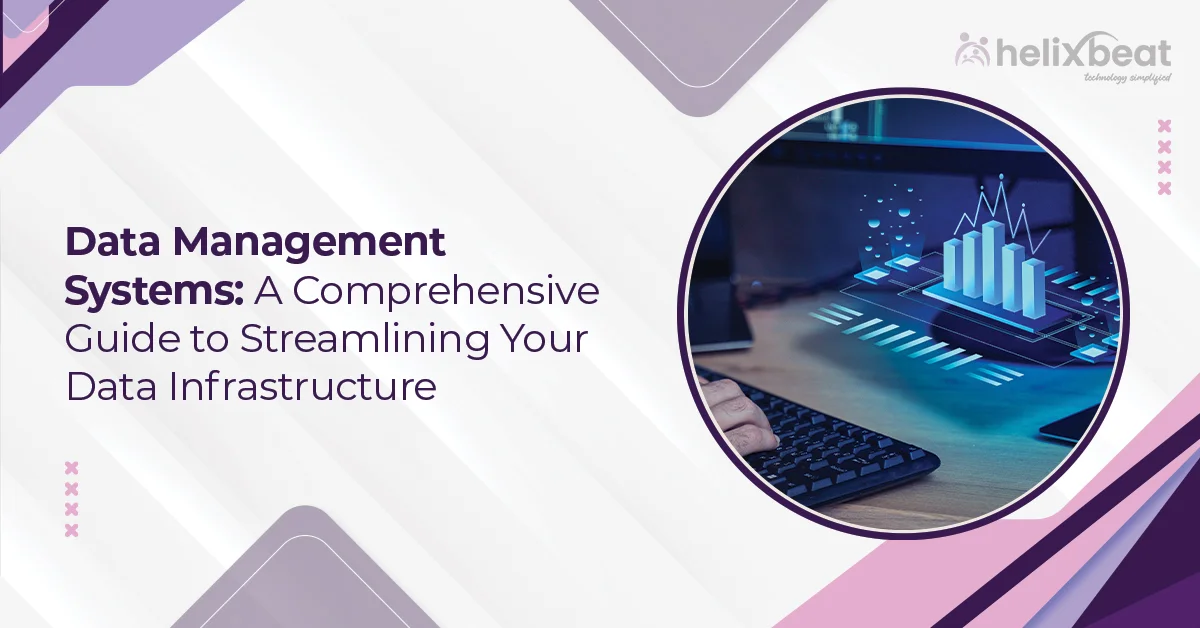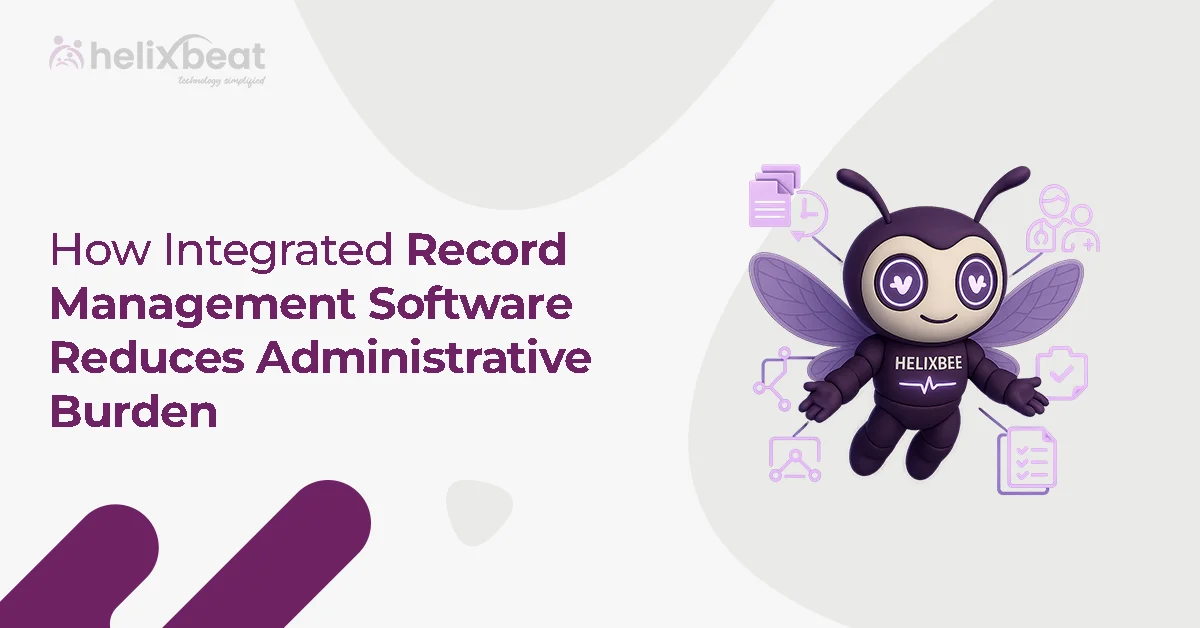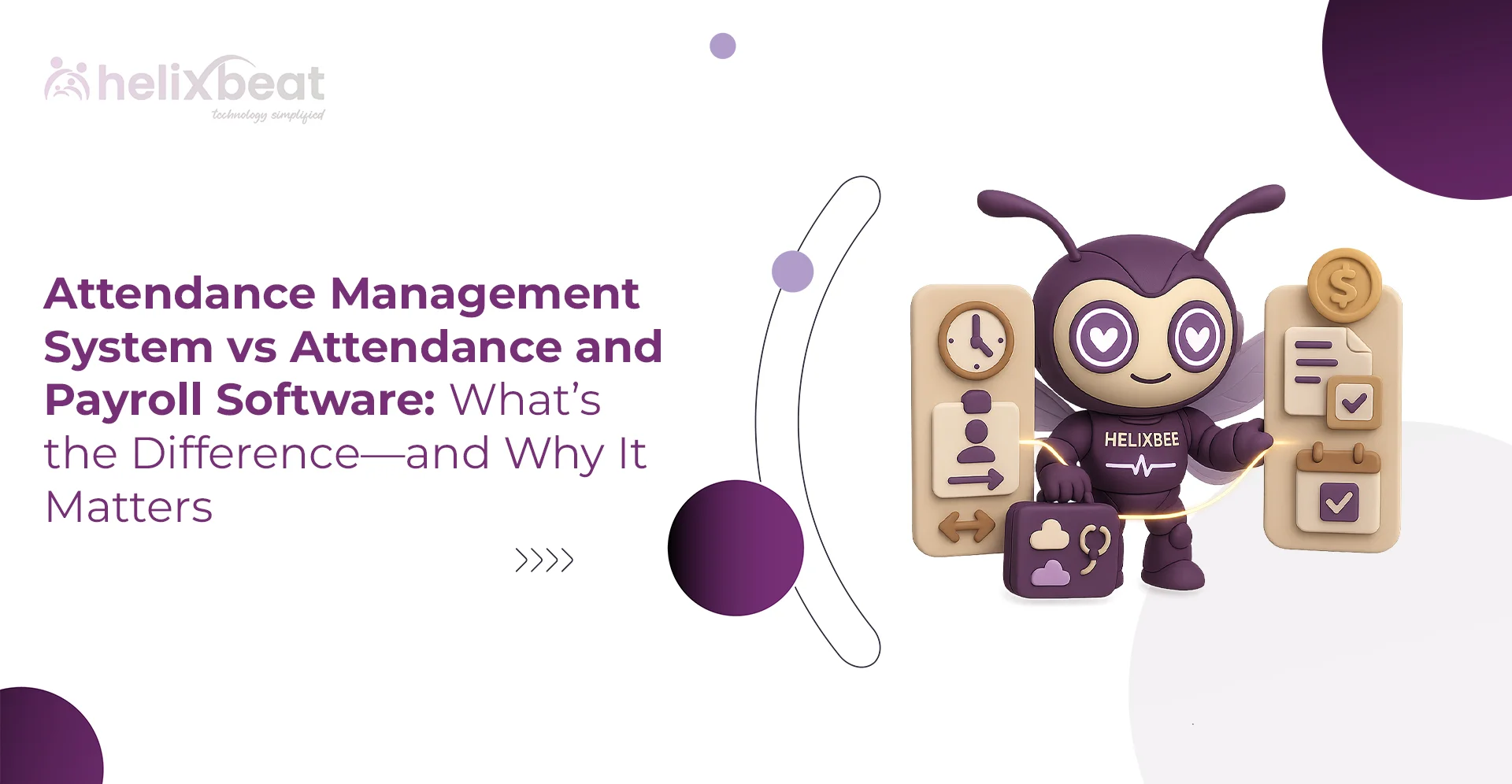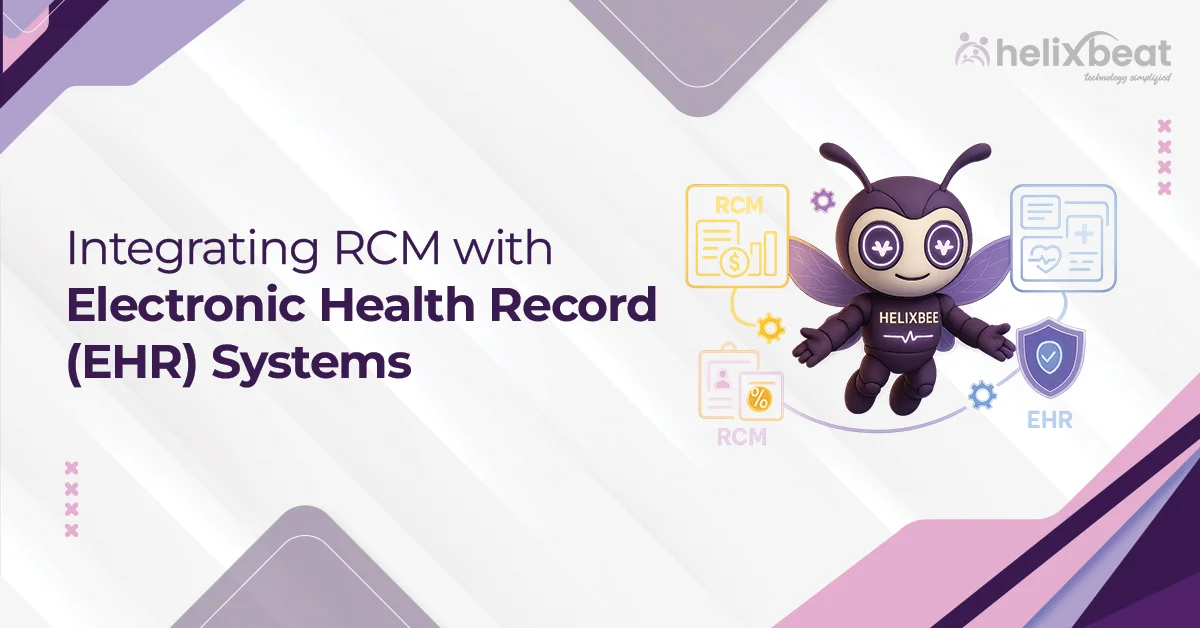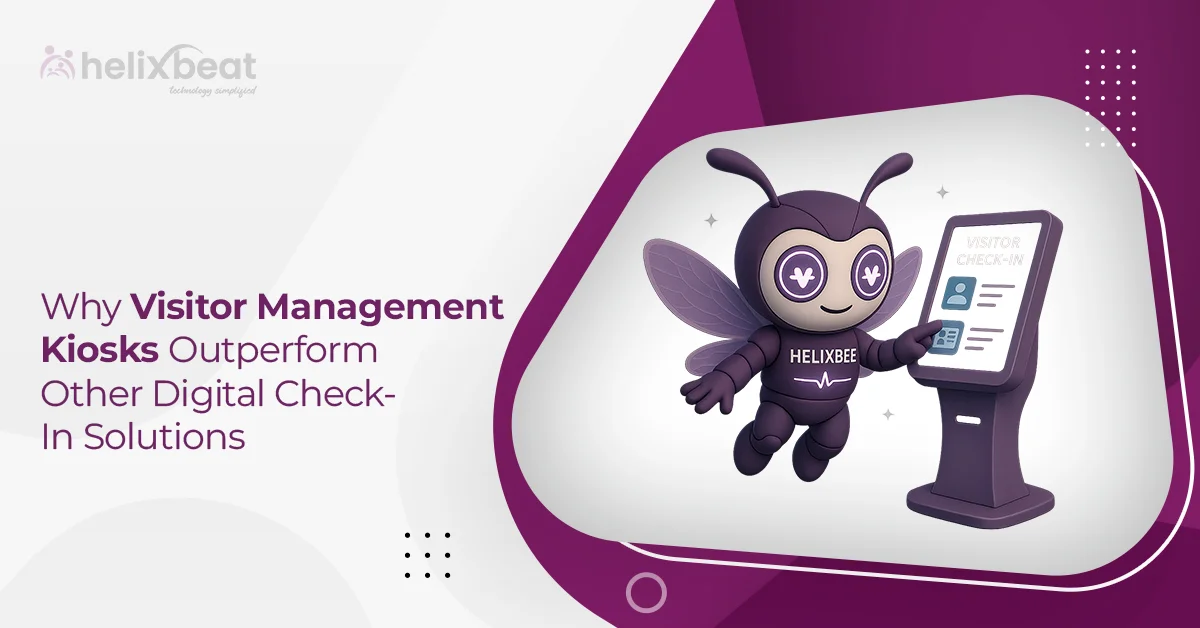Businesses collect mountains of data daily, from customer interactions and sales metrics to internal processes and employee performance. However, as the volume of this data grows, so does the challenge of managing it. Without a solid framework, your data can quickly spiral into chaos and create inefficiencies, security concerns, or missed opportunities. This is when data management systems take effect.
In this blog, we’ll discuss data management systems—exploring what they are, how they work, and why they’re necessary for modern businesses.
Table of Contents
What Are Data Management Systems?
A data management system refers to processes and tools used to collect, store, organize, protect, and analyze data. These systems can handle structured data, such as customer information in databases, and unstructured data, like social media content or emails.
A data management system is important for companies because it helps them keep their data:
- Accessible: Information can be quickly retrieved when needed.
- Accurate: The data is up-to-date and free from errors.
- Secure: Safeguards against unauthorized access and breaches.
- Consistent: Data is formatted to make it easy to compare and analyze.
Modern data management systems incorporate technologies like cloud storage, big data processing, and machine learning, making them far more powerful and scalable than their traditional counterparts.
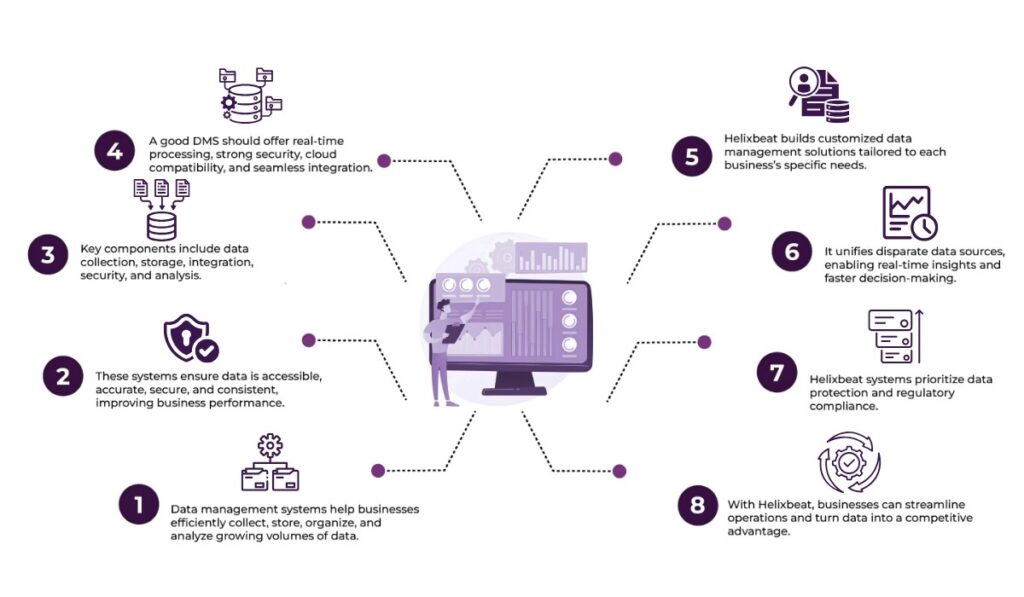
How Do Data Management Systems Work?
A typical data management system has multiple components that work together to handle different aspects of the data lifecycle. Here’s how they operate:
1. Data Collection and Ingestion
Data is first collected from various sources like applications, sensors, websites, customer interactions, etc. Once collected, the next step is data ingestion—importing the raw data into the system, which is then processed and cleaned to ensure its quality.
2. Data Storage
Once the data is collected and cleaned, it needs to be stored securely. Therefore, data management systems use databases or cloud storage solutions to organize the data. Depending on the type of data and its usage, the system may employ different storage solutions like relational databases, NoSQL databases, data lakes, etc.
3. Data Integration
To make data truly valuable, it often needs to be pulled together from various sources into a single, cohesive system. This is where data integration tools come into play. By seamlessly combining data, integration tools empower businesses to gain deeper insights across all areas of their operations.
4. Data Security and Privacy
Security is a major concern when dealing with sensitive data. Therefore, data management systems implement encryption, access control, and other security measures to protect the data from breaches and cyber threats. Compliance with regulations like HIPAA, CCPA, etc., is also a critical aspect of data management.
5. Data Retrieval and Analysis
Data retrieval is the process of accessing data when needed. Efficient data management systems allow for fast, easy searches and help businesses get the necessary information on time. Consequently, analytics tools can help gain insights from those data and drive decision-making.
Key Features to Look for in Data Management Systems
Here are some features that every DMS should offer:
1. Data Quality Management
The quality of your data directly influences the quality of your insights. Therefore, a good data management system should include data cleaning, validation, and transformation tools to eliminate errors and inconsistencies in your data.
2. Data Security and Compliance
Security features like user authentication, encryption, and audit trails are vital to protecting sensitive data. Additionally, the system should help your business comply with relevant regulations to reduce the risk of costly fines or legal action.
3. Real-Time Data Processing
For businesses that need to make quick decisions based on up-to-date information, real-time data processing is a must. Therefore, look for a system that supports streaming data and analytics, so you can act immediately on fresh data.
4. Data Integration Capabilities
Most businesses have data spread across multiple systems, applications, and platforms. A robust data management system should integrate easily with other tools and facilitate seamless data transfer between different environments.
5. Cloud Compatibility
As more businesses move to the cloud, it’s important to choose a DMS that is compatible with cloud environments. Cloud-based systems offer flexibility, scalability, and remote access, making it easier for teams to work from anywhere.
How Helixbeat Helps You Create Data Management Solutions
At Helixbeat, we specialize in building easy-to-use, customized data management systems that fit your unique needs. Here’s how we make it happen:
1. Custom-Built Solutions for Your Business
Helixbeat works with you to create a system that matches your goals, whether that’s managing customer data, streamlining operations, or analyzing business trends. We build a flexible solution that grows with your business, adapting as your needs change.
2. Connecting All Your Data in One Place
Often, businesses use different systems to store data—such as CRM software, website data, or customer feedback platforms. Helixbeat helps bring all that data together in one place, making it easier for your team to access and use. You won’t have to juggle multiple tools anymore; everything you need is just a click away.
3. Real-Time Insights for Better Decisions
Our solutions allow you to analyze your data in real-time, spot trends, and make decisions quickly. Whether you’re looking at customer behavior or operational performance, we help you turn data into action faster.
4. Protecting Your Data
Helixbeat integrates security features into your system, such as data encryption, secure access, and privacy protection. Thus, you can trust that your sensitive information is protected.
5. Making Compliance Simple
Data privacy regulations can be tricky, but Helixbeat simplifies compliance for you. Our systems help you meet necessary legal standards without added hassle. Therefore, your business remains compliant, which lowers the risk of fines or penalties.
Final Thoughts
A well-structured data management system gives businesses the tools they need to collect, organize, secure, and analyze data, transforming it into actionable insights.
With Helixbeat, you gain more than just a p=. We offer a customized approach that evolves with your business, helping you break down data silos, streamline operations, and unlock real-time insights. From seamless integration and enhanced security to compliance and driving data-driven innovation, we support your long-term success. Let Helixbeat guide you every step of the way.
FAQs
1. Why do businesses need a Data Management System?
Businesses need a DMS to manage the growing volume of data effectively. It helps organize data from multiple sources, improves decision-making, supports compliance, and enhances data security and accessibility.
2. What are the key features to look for in a Data Management System?
Key features include data quality management, real-time data processing, cloud compatibility, data integration capabilities, and robust security and compliance measures.
3. How does Helixbeat help businesses create customized Data Management Solutions?
Helixbeat works closely with businesses to design tailored data management solutions, facilitating seamless data integration, real-time analytics, data protection, and compliance.
4. How do Data Management Systems work?
DMS works by collecting data from various sources, securely storing it, integrating it for better access, protecting it with advanced security measures, and enabling fast data retrieval for analysis and decision-making.
5. What are the benefits of integrating data from multiple sources?
Data integration from multiple sources provides a unified view, making it easier to analyze and make informed decisions across different business functions, boosting efficiency and insight.



